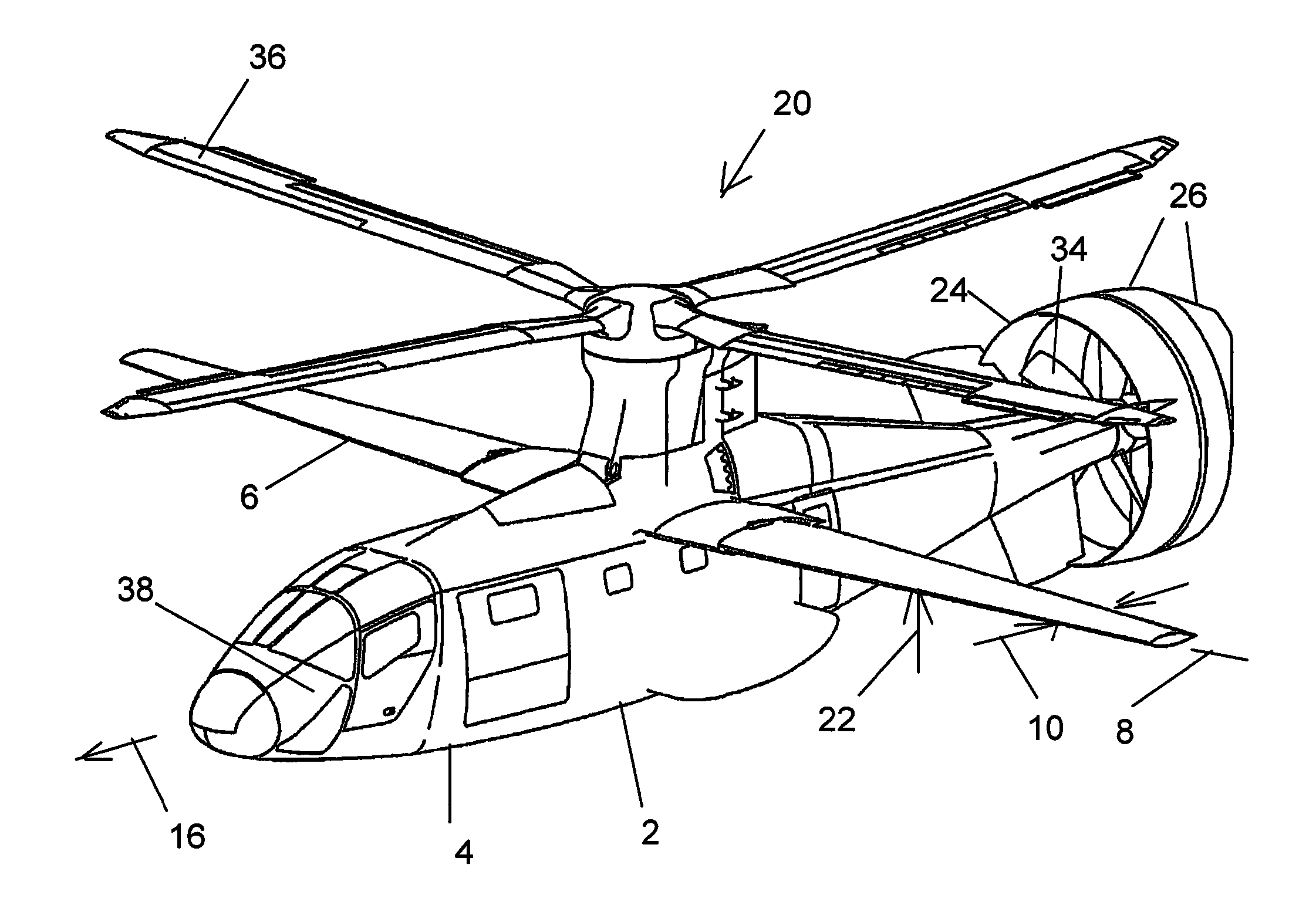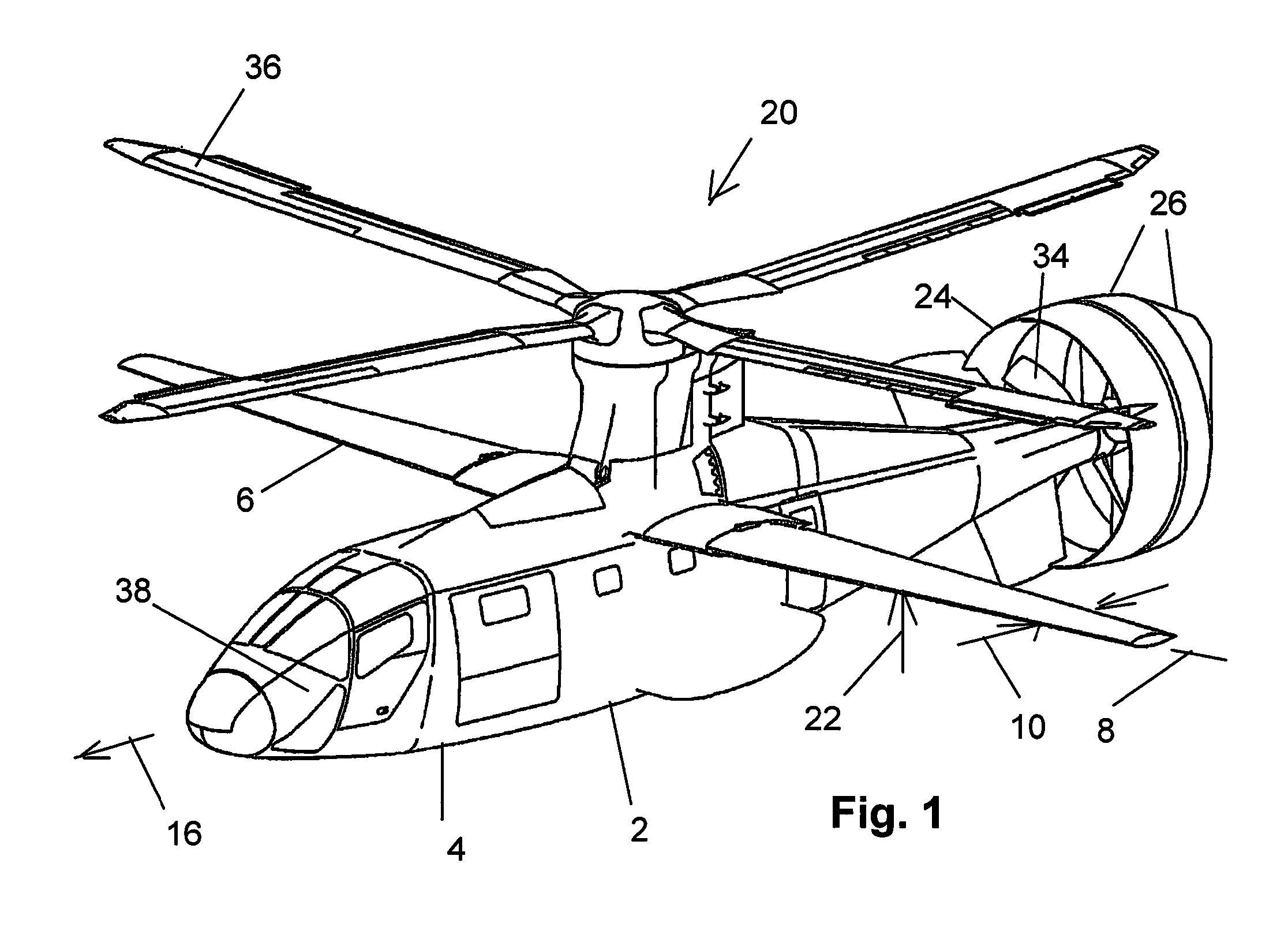Compound aircraft with autorotation
a technology of aircraft and blades, applied in the field of composite aircraft, can solve problems such as catastrophic failure of blades, and achieve the effect of stable blade rotation
- Summary
- Abstract
- Description
- Claims
- Application Information
AI Technical Summary
Benefits of technology
Problems solved by technology
Method used
Image
Examples
Embodiment Construction
[0046]FIGS. 1-5 are views of the compound aircraft 2. The compound aircraft 2 features a fuselage 4. A variable incidence wing 6 is attached to fuselage 4. Variable incidence wing 6 is rotatable about a variable incidence wing axis of rotation 8 between a cruise position, shown by FIGS. 1, 3, 4, 5 and 6 and a hover position, shown by FIG. 2. Variable incidence wing 6 defines a chord 10 between the leading edge 12 and trailing edge 14. When the variable incidence wing is in the cruise position shown by FIG. 1, the chord 10 is oriented generally in the forward direction 16. When the variable incidence wing is in the hover position, the chord 10 is oriented generally parallel to the axis of rotation 18 of the rotor 20, as shown by FIG. 2.
[0047]When the variable incidence wing 6 is oriented with chord 10 in the forward direction 16, the variable incidence wing is configured to generate lift 22 in response to air movement over variable incidence wing 6 due to the motion of the compound a...
PUM
 Login to View More
Login to View More Abstract
Description
Claims
Application Information
 Login to View More
Login to View More - R&D
- Intellectual Property
- Life Sciences
- Materials
- Tech Scout
- Unparalleled Data Quality
- Higher Quality Content
- 60% Fewer Hallucinations
Browse by: Latest US Patents, China's latest patents, Technical Efficacy Thesaurus, Application Domain, Technology Topic, Popular Technical Reports.
© 2025 PatSnap. All rights reserved.Legal|Privacy policy|Modern Slavery Act Transparency Statement|Sitemap|About US| Contact US: help@patsnap.com



